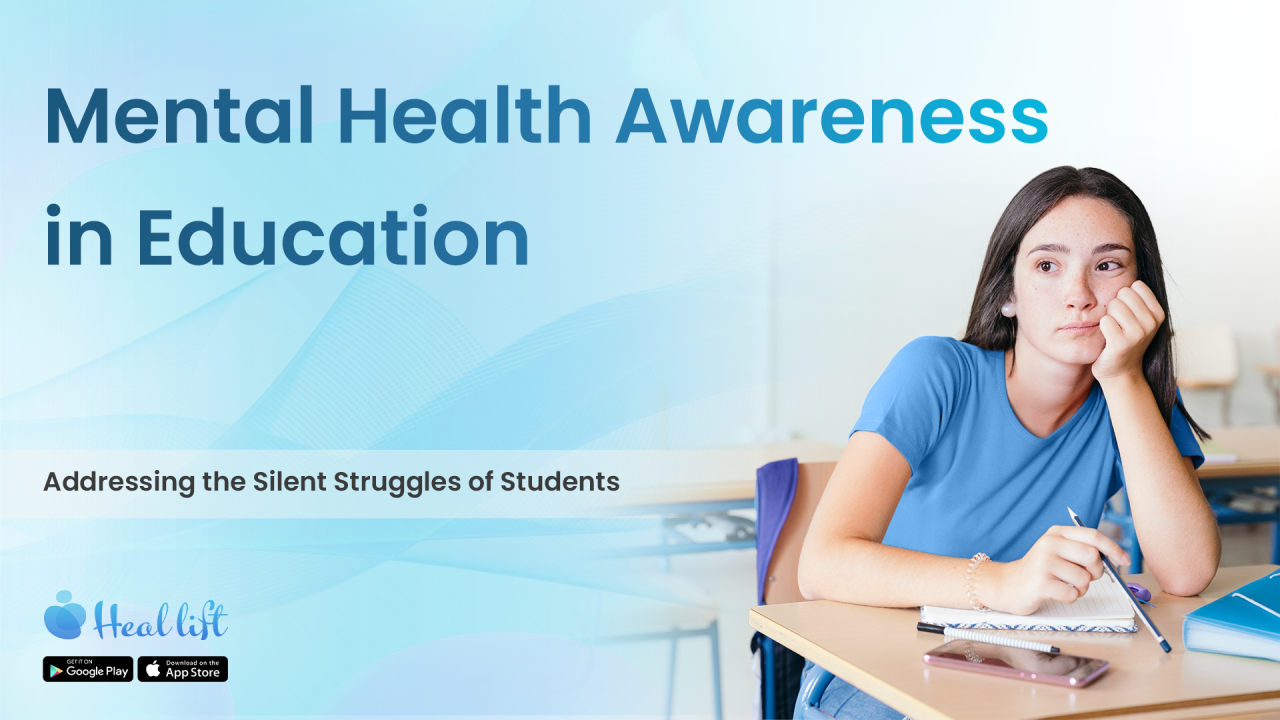HealLift - 09 Oct 2023
How to create a Supportive Workplace for Employee Mental Health
Insights from WHO's Mental Health at Work Policy

Heal Lift

There is no argument that educators should all take mental health awareness seriously. There is much that can be done to support children with mental health concerns since learning and accomplishment are directly impacted by a student's mental health. Here we dig a little deeper into mental health education since it is now a significant component in the world.
According to estimates from the National Alliance on Mental Illness and the European University Association, one in five persons suffer from a mental illness. Even though the average age at which mental illness first manifests itself is 14, most people wait until they are adults before seeking assistance. The fact that 60% of high school pupils with mental illness drop out emphasizes how serious the situation is. Recent data indicates that 40% of students in Europe encounter mental health problems. Thus, academic institutions must promote mental health and wellness and offer students the assistance they require to finish their education.
Teens spend the majority of their days in school, so it is essential to include instruction on mental health issues and awareness in the curriculum. There should be proper policies and procedures with management plans for mental health crises, including the danger of suicide or self-harm. Teachers and students should be given tools to identify the early warning signs of mental health problems.
Let's talk about how poor mental health affects students.
Involvement
It could be difficult for students dealing with mental health issues to participate in class discussions, interact, and finish their homework. Schools and universities should be able to identify students who may want more support or individual counseling by keeping track of attendance and participation levels.
Concentration
Students who struggle with mental health find it more difficult to concentrate. Depression affects concentration and can lead to concern over not finishing enough work. Struggles to keep up in class, and taking longer to absorb the lesson can be also seen.
Achievement
Students experiencing mental health issues may experience low marks and may struggle to manage the exam stress or deadlines. Students with higher expectations are under more pressure to do well, which can lead to stress, anxiety, and depression.
Attainment
It can be tough for those dealing with mental health issues to consider the future. Long-term objectives like graduating from college and selecting a career may appear too daunting or simply useless. Therefore they’re more likely to experience academic difficulties and drop out of college.
Extracurriculars
Problems with mental health can also have a big influence outside of the classroom. As a result, students could feel less motivated and unable to interact with others or participate in extracurricular activities. This might also result in a sense of loneliness, which can exacerbate anxiety and depression. Because they find it difficult to find new friends and try to stay away from social gatherings. But they must have a support system in place, in case they need it.
Now, what can we do about it? What steps schools, educators and universities should follow? So far, what have we done to prevent mental health issues in the education sector?
New York will be the first state in the US to mandate mental health education for all schools starting in July 2018. Promoting students' healthy social, emotional, and behavioral development is the overarching goal of New York's School Mental Health (SMH) program. It is said to break down barriers to learning so the general well-being of students, families, and school staff can be enhanced in collaboration with other comprehensive student support and services.
There are some methods the SMH program helps all kids thrive academically and emotionally.
Including thorough assistance and services at every grade level.
Evaluating the need for broad, specific, and focused interventions to address mental health issues.
Granting access to programs and services for behavioral and mental health.
Utilizing higher-level employees to provide the assistance and services that are required.
Fostering cooperative connections between the community and families of the kids and the school.
The idea of self-care, taking accountability for one's mental health and wellness, stressing the connection between mental health and physical well-being, as well as the notion of recovery from mental illness, are important topics to bring to light.
Many people battle with their mental health on their own because they are afraid of what other people may think of them or they don't know how to seek help. You may teach your kids to identify the signs of depression and anxiety by having candid discussions and promoting mental health awareness. Reducing the stigma attached to experiencing mental health issues can be accomplished by helping people comprehend the significance of self-care and mental wellness.
Sources
Barile, N. (2018). The Importance of Mental Health Awareness in Schools.
